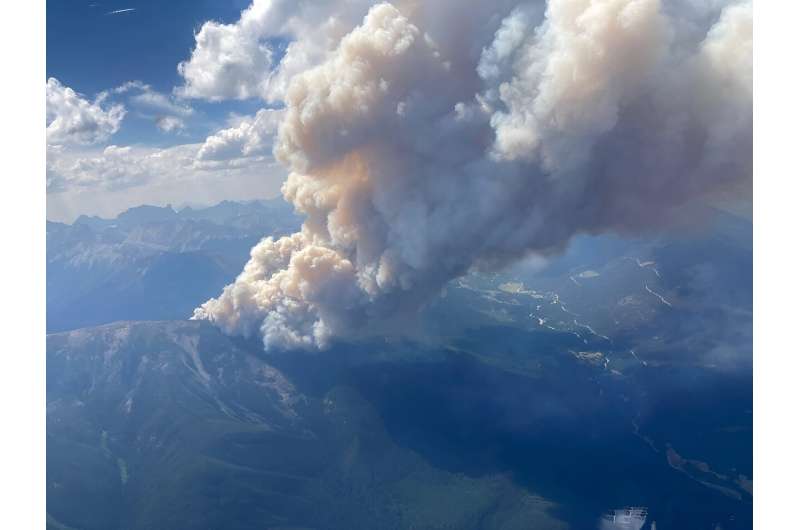This article has been reviewed according to Science X's editorial process and policies. Editors have highlighted the following attributes while ensuring the content's credibility:
fact-checked
reputable news agency
proofread
Military joins wildfire fight in Canada's far north

Canada's military deployed to far north Sunday in the fight against hundreds of out-of-control wildfires as residents of several remote communities fled the advancing blazes.
The province of British Columbia, on the country's Pacific Coast, meanwhile, braced for a heat wave expected to further fuel fires burning there.
"We stand with the people of the Northwest Territories as they deal with serious wildfires," Defense Minister Bill Blair said on X, formerly known as Twitter.
"In response to a request for assistance, the @CanadianForces will help with firefighting efforts, air transportation, and planning, coordination and logistics," he said.
The size of the deployment was not announced, but the Canadian military has sent hundreds of troops to four other provinces in recent months to help battle wildfires alongside nearly 11,000 firefighters—including 5,000 brought in from abroad.
This season, megafires have spread across the country with remarkable intensity, forcing 168,000 Canadians to flee their homes and scorching 13.5 million hectares—almost twice the area of the last record of 7.3 million hectares, according to the Canadian Interagency Forest Fire Center (CIFFC).
Four people have died so far in this year's wildfires.
The blazes have also emitted an unprecedented amount of carbon dioxide—more than a billion metric tons—which is roughly the same amount that would be produced in a year by 217 million cars, or approximately the annual emissions of Japan.
Over the weekend, several communities in the Northwest Territories were ordered to evacuate, including 2,500 residents of Fort Smith, as 233 wildfires raged over 2.1 million hectares of the boreal forest.
Environment Canada, meanwhile, warned that temperatures in Vancouver and other parts of British Columbia—where 390 wildfires are burning—would soar through Wednesday.
Temperatures, however, are not expected to top a record high set in June 2021, when the mercury in Lytton hit 49.6 degrees Celsius (121.3 Fahrenheit) before the village was ravaged days later by a fire that killed at least two residents.
"A strong ridge of high pressure will bring rising temperatures to the South Coast (region of British Columbia)," the agency said in an advisory.
"Well above seasonal daytime temperatures combined with elevated overnight temperatures will mean little relief from the heat."
Cultus Lake, east of Vancouver, was Canada's hotspot on Sunday, at 31.1 degrees Celsius. Parts of British Columbia are forecast to rise to 40 Celsius this week.
© 2023 AFP




















